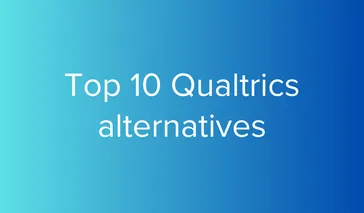5 min read
Empower employees while caring for employee well-being. Prevent employee burnout and depression.
ex Platform
From the moment someone looks at your job offer to the moment they leave your company, everything an employee learns, does, sees and feels contributes to their Employee Experience. In order for your organization to master employee experience management, you need to listen to your employees at every stage of the company’s life cycle, identify what is most important to them and create a personalized, tailored Employee Experience.
What is Employee Experience?
Employee Experience is the so-called employee experience and is the basis of business performance. Maintaining efforts for Employee Experience, improving products, and building a strong and reputable brand requires the help of your employees. Ultimately, it will be their experiences - positive and negative - that will determine whether or not they invest in improving operational performance.
Employee Experience stages
Employee Experience is everything an employee learns, does, sees, and feels at every stage of the company’s life cycle. They can be divided into 5 stages.
Recruitment
It covers all the steps that lead to the hiring of a new employee. It is necessary to take into account how much time it takes to hire, how much it cost, the rate of acceptance of the offer, and the quality of the employment itself. Were your job advertisements attractive and transparent enough to attract the attention and applications of the best candidates? Did your interview process engage and reassure candidates so that they can quickly accept your job offer? What was the candidate’s entire experience like?
The process of introducing a new employee to the company
The new employee quickly becomes familiar with the systems, tools, and processes related to the new position. Most new hires take time to gather pace and become productive in their work. Of course, the sooner they can do this, the more it pays off for your organization. An effective onboarding process translates someone’s initial enthusiasm for a new job into a more meaningful, long-term brand connection and greater commitment.
Development
Employee development is a continuous phase of an employee’s journey, in which individuals develop at different rates for a variety of skills. As employees develop within their roles, you need to quantify their productivity, ability to be part of the team, and promotion aspirations. You also want to give them a chance to broaden their skills, which is an increasingly important differentiator for many employees who want their careers to consist of many different experiences.
Retention
Employees are now fully integrated into the organization. With a strong people retention strategy, you can keep them productive, grow and contribute to the company’s success, and ensure they are tied to its core vision. From an economic point of view, it makes sense for the company to do everything in its power to retain its current employees. Replacing them can cost as much as 50% -60% of the employee’s annual salary. Read more: how to reduce employe turnover.
Exit interview survey
Employees can leave for many reasons: retire, move to another employer or change their lives. Each employee will leave your company at some point, and finding out why is an opportunity to improve and develop the experience for current and future employees. In their exit interview survey, people who quit may be more honest about why they quit, as they may feel they have nothing to lose.
How to improve Employee Experience?
If you focus only on employee engagement and company culture, you are missing the trick of integrating all workplace, human resources, and management practices to focus on Employee Experience management. Several things affect Employee Experience from the moment you become familiar with the job offer to the moment you leave the company. Jacob Morgan, the author of The Employee Experience Advantage, highlights three basic environments that makeup Employee Experience, regardless of the organization’s size.
Culture - Difficult to define, as each is different; the company’s culture may be what the manager says, what you understand from its mission, values, practices, and attitudes, and even shop floor camaraderie. It is a mixture of leadership style and organizational structure, a sense of purpose. Corporate culture is the atmosphere you feel when you come to work - it can motivate or suppress, excite or annoy, and empower or discourage employees.
Technological Environment - Imagine you boot up your desktop computer on day one and discover that you are running Windows XP. Forward-thinking organizations invest in the right tools for employees to do their jobs efficiently with future development in mind. The technological landscape is so vast that it is easier than ever to give employees the tools they need to maximize efficiency and make them feel more confident in their roles.
Physical Workspace - Workers who work from 9am to 5pm in a windowless, air-conditioned basement will have a completely different experience than those who work flexibly in a spacious new glass building with an on-site gym, canteen, and chill out area. Employees who are happy in their work environment are better focused and more productive. And the physical workplace is not necessarily always in the office: the autonomy of working from home can also contribute to a positive Employee Experience.
Read more about the Benefits of employee work-life balance and improve your Employee Experience!
How to design an Employee Experience strategy?
If you consider that Employee Experience is ultimately about creating personalized experiences, developing an Employee Experience framework is a challenge - especially in the face of constant change. By breaking down the Employee EX strategy into three basic elements, you can design and shape a good strategy.
Discover the moments that are important to your employees by collecting regular feedback from the entire employee lifecycle.
Make corporate culture, technology, and the physical workplace as good as possible.
Extend your traditional HR functions to recognize the importance of customer experience and its impact on Employee Experience.
Create an account on the Responsly platform or use the free 7-day test access and get to know all the possibilities of the website. Using our tool, you can use our database of ready-made survey examples.






